
Do you have a question about the Toshiba 40L2400U and is the answer not in the manual?
| Screen shape | Flat |
|---|---|
| Response time | - ms |
| Display diagonal | 40 \ |
| Display brightness | - cd/m² |
| Native refresh rate | 60 Hz |
| LED backlighting type | - |
| Supported graphics resolutions | 1920 x 1080 (HD 1080) |
| Motion interpolation technology | ClearScan 120 Hz |
| PC in (D-Sub) | No |
| DVI-D ports quantity | 0 |
| USB 2.0 ports quantity | 1 |
| Wi-Fi | Yes |
| Product color | Black |
| Panel mounting interface | 200 x 200 mm |
| Power consumption (standby) | - W |
| Package depth | 145 mm |
| Package width | 998 mm |
| Package height | 678 mm |
| Package weight | 12519 g |
| Sustainability certificates | ENERGY STAR |
| Depth (with stand) | 193 mm |
|---|---|
| Height (with stand) | 587 mm |
| Weight (with stand) | 9480 g |
| Depth (without stand) | 69 mm |
| Width (without stand) | 927 mm |
| Height (without stand) | 549 mm |
| Weight (without stand) | 8890 g |
Highlights safety instructions and their classification based on risk severity.
Lists and briefly describes the key features of the Toshiba wide screen HD LED TV.
Provides a step-by-step guide for setting up the TV and beginning its operation.
Identifies and explains the controls and connection ports on the front and side panels.
Details the various input and output connection ports located on the back of the TV.
Explains different types of audio/video cable connectors required for device connections.
Describes the coaxial cable connection for antenna, cable TV, or converter boxes.
Explains standard composite video and analog audio cables, color-coded for use.
Details component video cables used for connecting devices with component video output.
Describes HDMI cables for digital audio and video connections, supporting high-definition.
Explains the use of optical audio cables for connecting to digital audio systems.
Provides diagrams and instructions for connecting VCRs, antennas, cable TV, and camcorders.
Guides on connecting Blu-ray/DVD players or satellite receivers using ColorStream or VCR inputs.
Instructions for connecting devices with HDMI or DVI outputs to the TV's HDMI input.
Explains how to control CEC-compatible devices using the TV remote via HDMI.
Details connecting external Dolby Digital decoders or audio systems via optical output.
Instructions for connecting a computer to the TV using HDMI or DVI connections.
Step-by-step instructions for inserting batteries into the remote control.
Information on optimal aiming and distance for remote control operation.
Description of the functions of various buttons on the TV remote control.
Provides an overview of the TV's menu system structure and available settings.
Explains how to use the remote control buttons to navigate and select menu options.
Guides through the first-time setup process, including language and mode selection.
Details how to select menu language, time zone, and other installation preferences.
Explains how to automatically detect and store active TV channels in the area.
Instructions for manually saving specific channels to the TV's memory for easier access.
Provides steps for manually tuning specific analog or digital channels.
Describes how to skip specific channels to prevent them from being viewed.
Explains how to configure shared AV inputs for ColorStream HD or Video.
Guides on setting the correct time zone for accurate TV status information.
How to access and view information about the TV's current system status.
Procedure to reset all TV settings and channels to their original factory values.
Explains how to choose and switch between different video input sources connected to the TV.
Instructions for assigning custom labels to video input sources for easier identification.
Details how to use the Channel Browser for navigating and tuning channels and inputs.
Explains how to create and manage a list of favorite channels and inputs.
Describes how channels and inputs are added to and cleared from the History List.
How to tune to the next available programmed channel using the remote or control panel.
Instructions for tuning to analog or digital channels directly by number.
Explains the Channel Return feature for quickly switching between the last two viewed channels.
Details the SurfLock feature for memorizing one channel for quick access via the CH RTN button.
Guide to choosing various picture aspect ratios like Native, 4:3, Full, and TheaterWide.
How to adjust the vertical position of images in TheaterWide 2 and 3 modes.
Enables automatic selection of picture size based on the input signal source.
Stretches 4:3 programs to fill the full screen, providing a larger image.
Allows pausing the current video picture on the screen.
Describes different picture modes (Dynamic, Standard, Movie, Game, PC) for optimal viewing.
Explains the two options for closed captions: displaying dialogue or text information.
Allows customization of closed caption display characteristics like color, size, and opacity.
How to partially mute or completely turn off the TV's sound.
Enables switching between audio tracks on digital channels for different language or audio options.
Guides on enabling stereo sound or selecting secondary audio programs (SAP) for analog broadcasts.
Explains how to adjust Bass, Treble, and Balance for personalized audio output.
Enables immersive virtual surround sound experience with enhanced bass and dialog clarity.
Allows selection from various sound modes like Standard, Music, Movie, or Clear Voice.
Limits high volume levels and prevents sudden volume changes between channels or commercials.
Compresses Dolby Digital dynamic range for consistent volume across broadcast types.
Essential step for accessing and using parental control features and locked menus.
Instructions on how to set a new four-digit PIN code for security.
Procedure to recover or reset a lost or forgotten PIN code for parental controls.
Guides on modifying or removing the existing PIN code for parental controls.
Utilizes the V-Chip feature to block content based on selected TV program ratings.
How to view the rating information of the currently watched program using the INFO button.
Allows temporary access to programs that exceed set rating limits by entering a PIN.
Enables locking specific video input sources, preventing unauthorized access.
Allows specific TV channels to be locked, requiring a PIN for access.
How to play photo and music files stored on a USB storage device through the TV.
Configures the Media Player to launch automatically when a USB device is inserted.
Describes methods for manually starting the Media Player application.
Explains different view modes (Multi View, Single View, Slide Show) for photos.
Allows browsing photos in a grid format using thumbnail previews.
Displays individual photos, allowing manual content changes and rotation.
Enables viewing photos as an automated slideshow with options for interval and repeat.
Instructions for selecting, playing, and managing music files from a USB device.
How to view photos while listening to music in the background.
Provides options to sort photo folders and music files by title, newness, or order.
Enables controlling connected HDMI CEC playback devices using the TV remote.
Details the setup process for enabling and configuring HDMI CEC features on the TV.
Allows selection of RGB range modes (Auto, Full, Limited) for HDMI inputs.
Enables displaying detailed HDMI signal information like resolution, frame rate, and color space.
How to display current TV input, channel, and signal status using the RECALL button.
Covers advanced options for fine-tuning picture quality beyond basic adjustments.
Feature to adjust standard color settings for a more personalized picture.
Allows adjustment of Hue, Saturation, and Brightness for specific base colors.
Enables selection of preset color temperatures (Cool, Medium, Warm) to alter picture tone.
Adjusts the levels of black detail in the picture for better contrast and depth.
Dynamically adjusts backlight based on video content to enhance contrast and depth.
Automatically adjusts contrast settings to improve picture appearance based on scene changes.
Optimizes picture settings for viewing movies, providing smoother motion for DVD sources.
Reduces visible interference and noise in the picture, especially on analog signals.
Reduces visible interference caused by MPEG compression in video signals.
Softens screen representation of weak signals to minimize noise effects.
Adjusts picture settings to enhance sharpness and edge definition.
General steps and advice for diagnosing and resolving common TV problems.
Addresses common issues related to picture display, color, and input sources.
Guides on resolving issues related to audio output, including tuning and mute settings.
Troubleshooting steps for issues with tuning channels, including auto-tuning and lock features.
Solutions for issues with the TV's remote control not operating properly.
Addresses issues where closed captions may not display correctly or at all.
Troubleshooting for issues related to V-Chip rating blocking and PIN codes.
Solutions for when the HDMI CEC feature is not functioning as expected.
Troubleshooting steps for issues related to HDMI connections and compatibility.
Resolving issues encountered with the Media Player, such as USB connectivity or file playback.
Details the TV's NTSC, ATSC, and Digital Cable standards compliance.
Specifies the VHF, UHF, and Cable TV frequency bands supported by the TV.
Information on the TV's power requirements, including voltage and frequency.
Lists the maximum current draw for different TV models.
Details the power consumption of the TV, particularly in standby mode.
Specifies the audio output power of the TV's speakers.
Provides specifications for the TV's built-in speakers.
Lists and describes the types of video and audio input/output terminals available.
Details the signal levels and characteristics for video and audio inputs.
Specifies the video and audio signal formats accepted by the ColorStream HD input.
Details HDMI input compliance, HDCP, and audio sampling formats.
Provides the physical width, height, and depth of the TV with the stand attached.
Lists the weight of the TV with the stand attached for different models.
Specifies the recommended operating temperature range for the TV.
Lists all items included in the TV package, such as remote, guides, and cables.
Lists the various signal formats compatible with the TV's HDMI inputs.
Provides detailed resolution, vertical, horizontal, and pixel clock frequencies for HDMI signals.
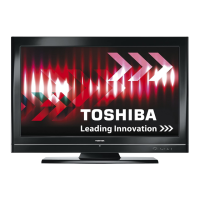
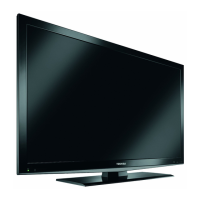
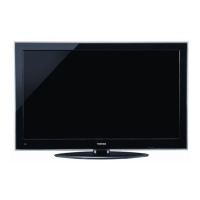
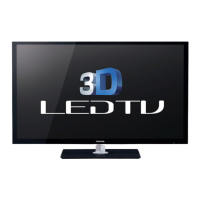
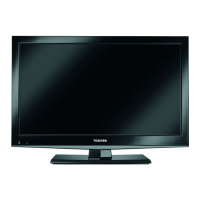
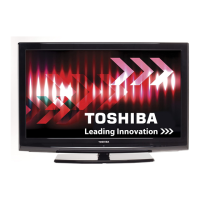


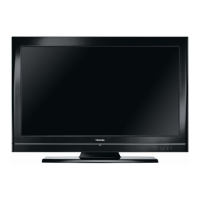

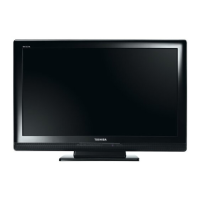
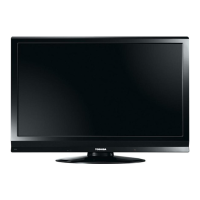
